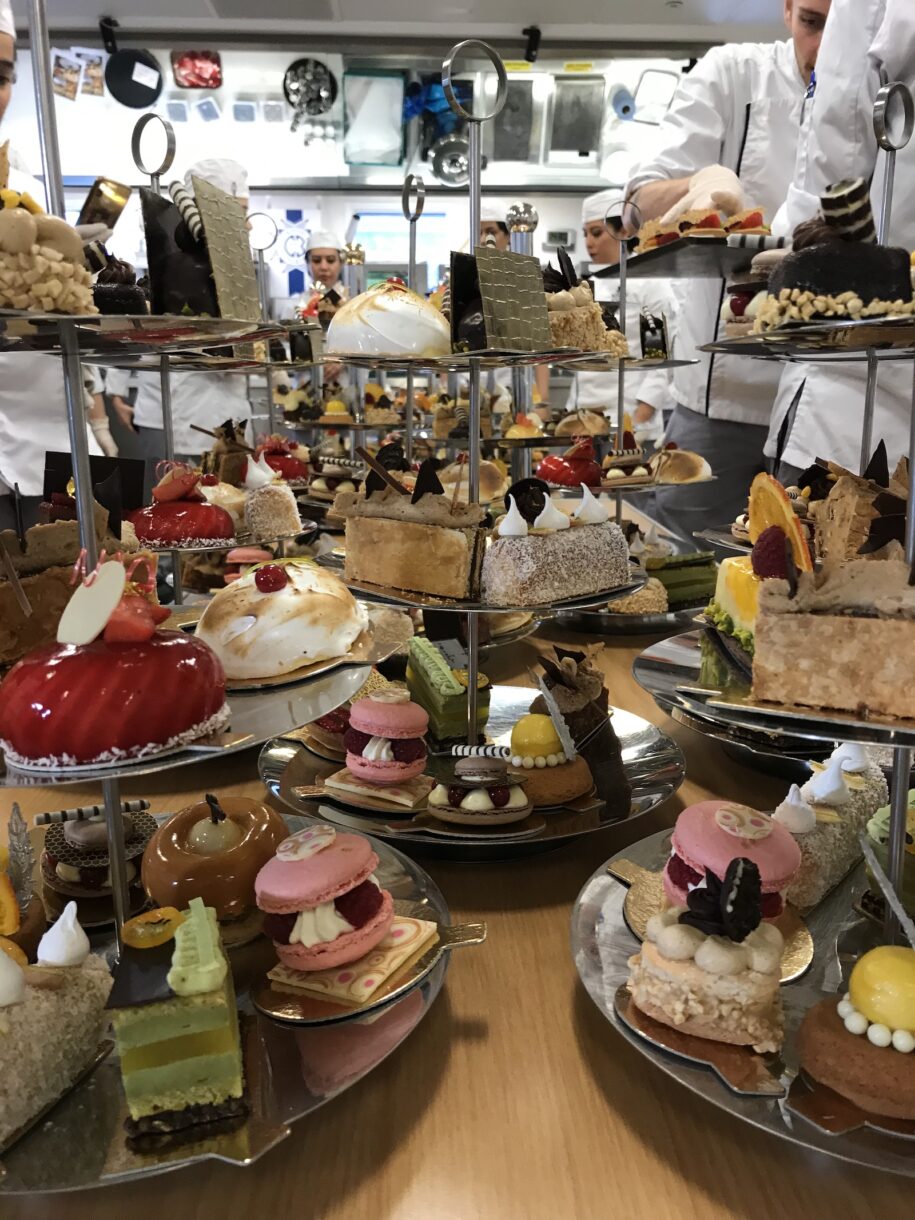This post may contain affiliate links. Please read the disclosure policy to learn more.
Thank you for supporting this blog!
Week five was a busy one: Eclairs, Mille-Feuille, and the St. Honoré Cake.
Over the course of the week we had another product identification course, three demonstrations, and two practical lessons. Plus, I did some extracurricular baking in my free time to improve on the skills we’re learning in class.
Our product identification class this week was actually really fun. We focused on all kinds of nuts, seeds, and oils used in a pastry kitchen. We also learned about different allergens. However, I think the most interesting part of the class was learning about the history of Nutella!
Mille-Feuille
For our first demo and practical of the week, we continued our study of puff pastry. We used the puff pastry dough we’d prepared in last week’s practical. It had been frozen for us in between. The recipe we made was a mille-feuille chocolat aux framboises (mille-feuille with chocolate and strawberries). Here is the chef’s demo:


And here is my finished product:

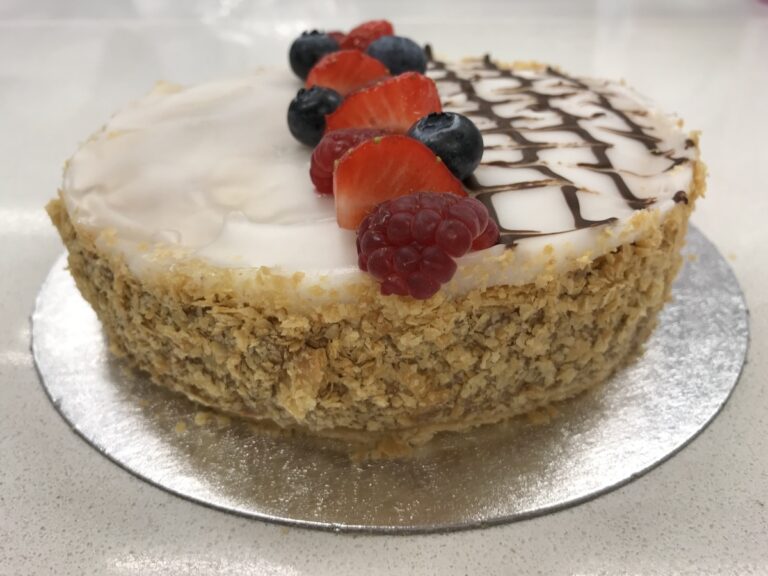

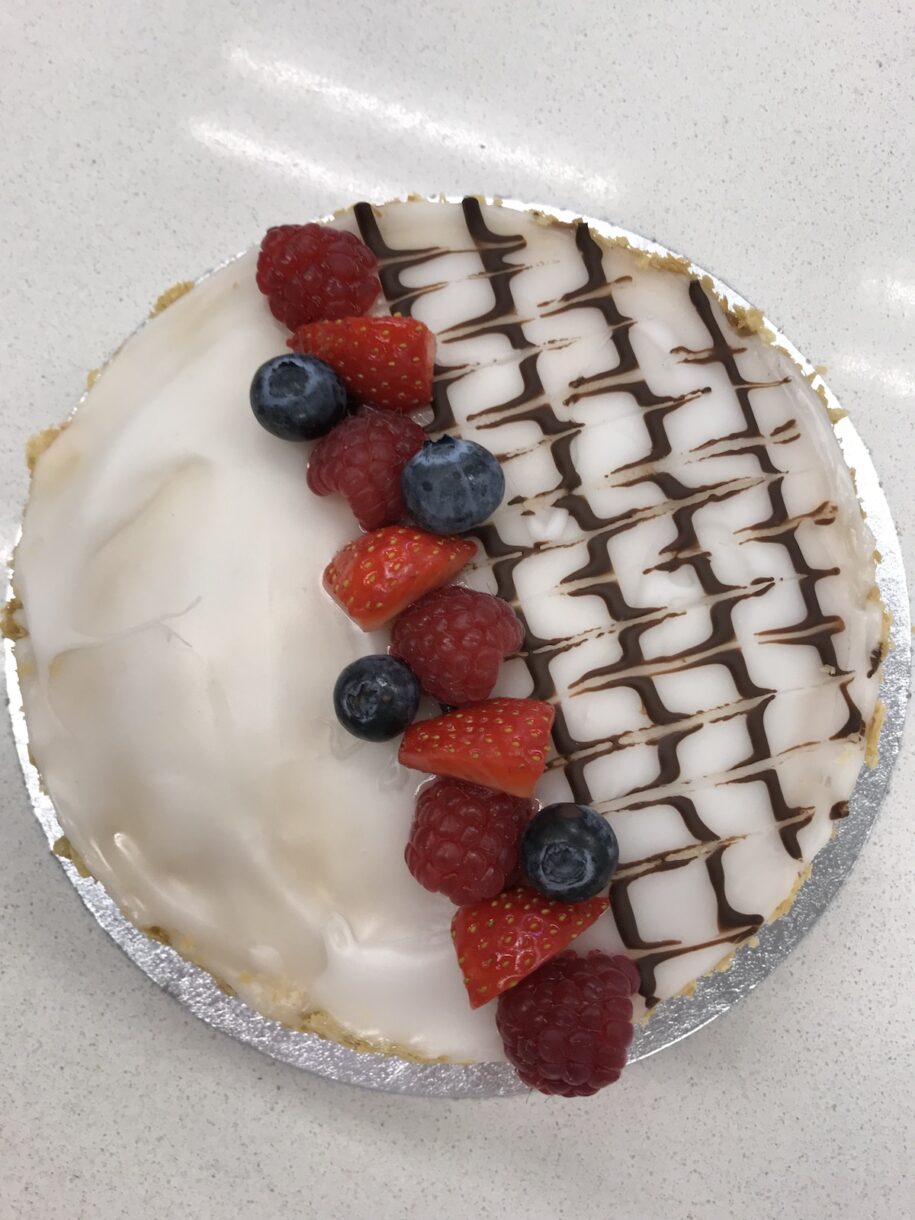

I was actually pretty pleased with how this one turned out, with the exception of the fondant on top. I learned that it hardens very quickly. You really only have a matter of seconds to apply the fondant and add the chocolate decoration. I was WAY too slow. By the time I tried to add the marbling effect, the chocolate and the icing had already set up. Lesson learned for next time!
Eclairs au Café
In our next demo and practical, we made pâte au choux (choux pastry) for the first time. This was done in preparation for baking eclairs au café (coffee eclairs). The chef demonstrated the choux pastry dough and made the coffee pastry cream. He also showed us how to properly pipe filling into the eclairs. Then, he finished them with fondant and chocolate piping on the top:

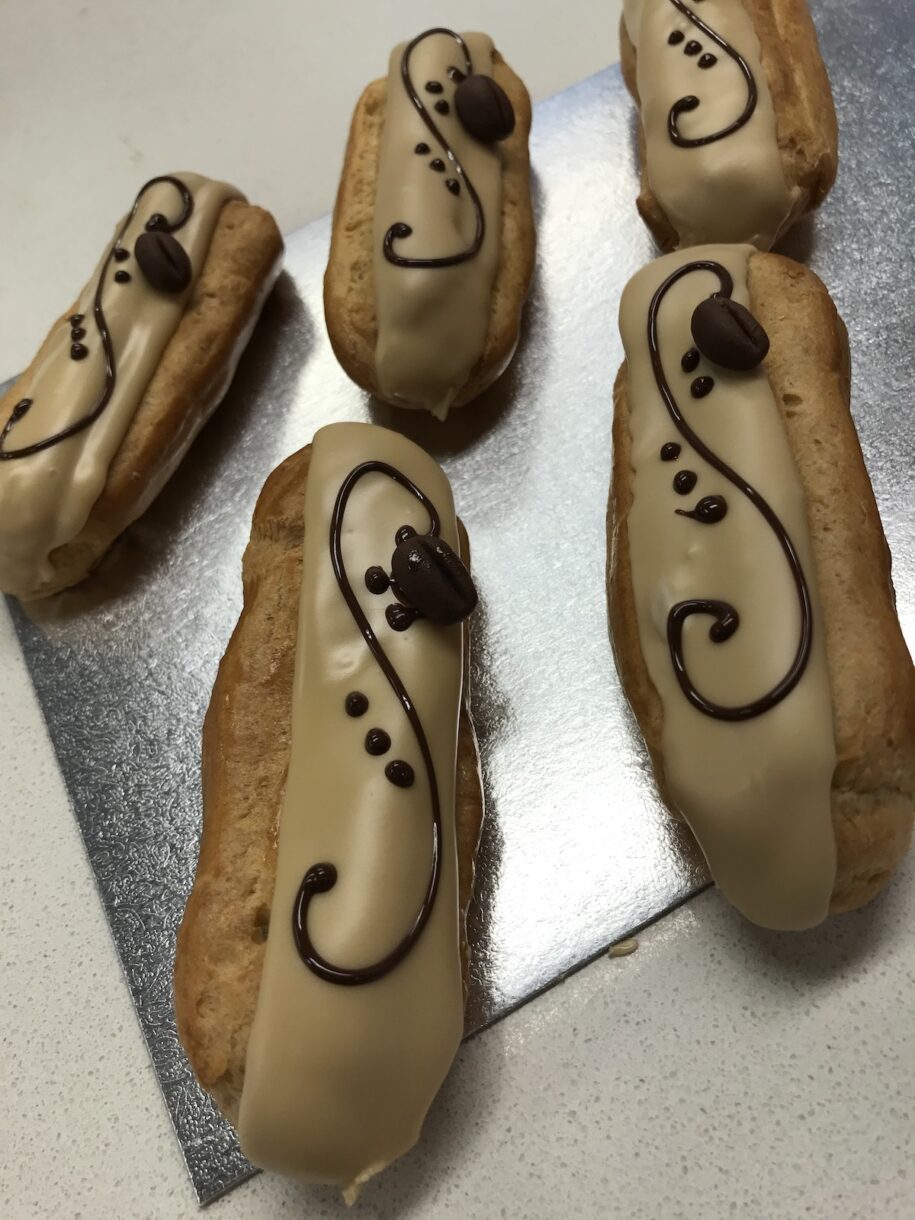

I found this dish easier than the puff pastry, and I think my results were more successful. My eclairs weren’t uniform enough in size because I definitely got better at piping the choux pastry as I went along. And getting the fondant to the proper temperature will take some practice. Mine was a little sloppy, which made it harder to pipe the chocolate decoration on the top.
My photos of this dish also aren’t the best, since I forgot about taking pictures until after I put the eclairs in my box to take home…and once I remembered and took them out of the box, they were already sort of smushed. Oh well. They definitely tasted better than anything we’ve made so far! Not sure if that’s because I’m getting better at this, or because I love all things coffee-flavored, or maybe both!
My Finished Eclairs





St. Honoré Cake
For our final demo of the week (at 8:00 on a Saturday morning, on a bank holiday weekend!) we watched the chef make a Gâteau St. Honoré, which we will be baking in our practical next week. The St. Honoré is a traditional French cake which combines many of the components we’ve learned over the past few weeks: choux pastry, shortcrust pastry, and pastry cream. If all goes well, I’ll end up with something that looks like this:


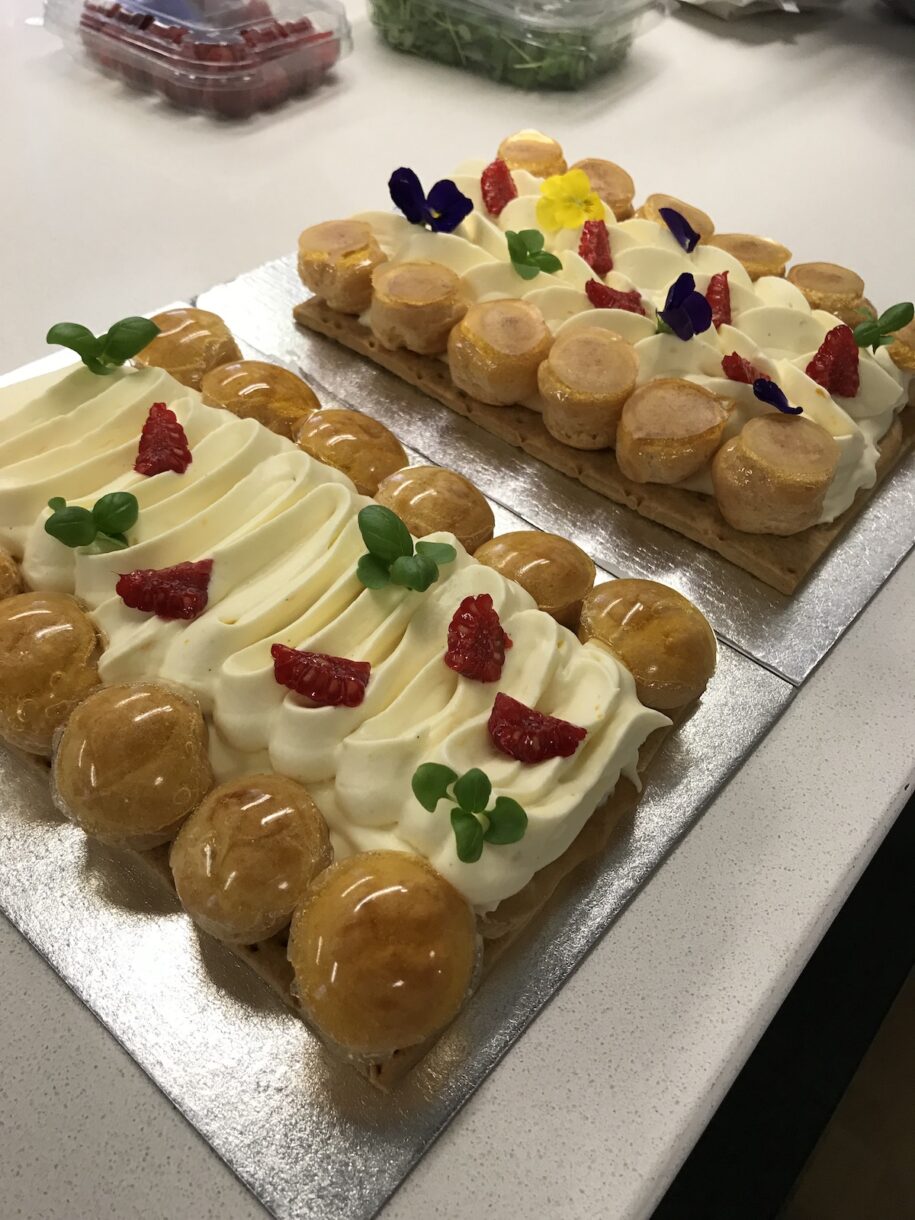
Practice Makes Perfect
Outside of class, I also tried to do some practice baking on my own time. I did one more practice of the lemon tart, which I’m definitely feeling more confident about each time I make it. I finished this one in under two hours, and I think it’s the prettiest one yet:


Making a British Classic
I also utilized some of the techniques we learned while preparing our jalousie aux mirabelle et creme d’amandes to make another puff pastry at home. The training at school is mostly focused on French cuisine, but since I’m living in Britain, I am trying to learn as many traditional British pastries as I can outside of class. I’ve registered for a couple of day courses at some other UK schools and bakeries, and am also taking advantage of local ingredients to try some recipes on my own. This is a traditional English mincemeat puff pastry with apples and citrus:






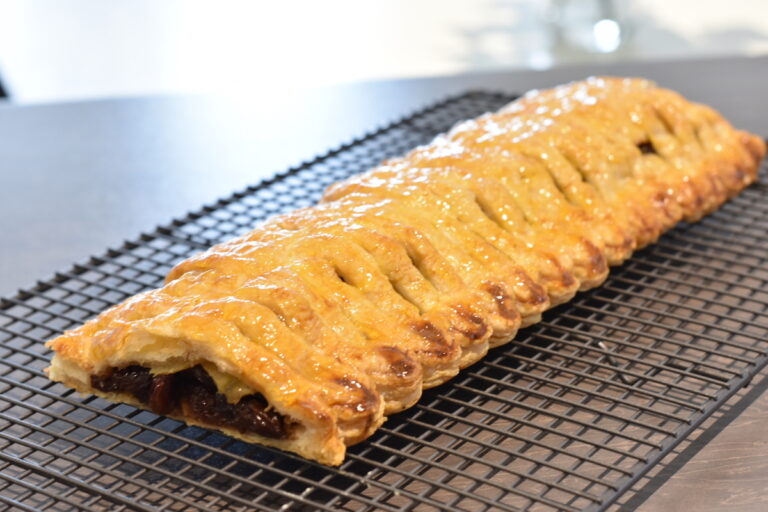


Now on to week six: traditional French patisserie cakes!
Missed last week’s recap? Read about week four here.
 About Rebecca:
About Rebecca:
Rebecca earned the Diplôme de Pâtisserie from Le Cordon Bleu London in 2020. She kept this detailed diary as a record of her journey, and as a way to help others decide if pastry school might be the right choice for them. Rebecca also holds an MSc in Culinary Innovation from Le Cordon Bleu and Birkbeck, University of London, and a Professional Chocolatier’s Certificate from Ecole Chocolate. She currently works as a recipe developer, food stylist, food photographer, writer, and pastry chef. Feel free to make one of her original recipes, or to follow her on Instagram @bastecutfold for more baking and pastry inspiration!
